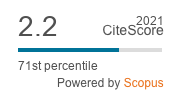Socio-Economic Sitvations of Dwellers In Mangrove Ecosystems
Abstract
This study aims to investigate and assess socio-economic aspects of mangrove dwellers in order to gain more understanding of the mangrove community. Baseline data and results obtained from this study may be useful for developing the mangrove management plan aiming to improve the income and traditional way of life of the mangrove dwellers. Ko Lao and Had Sai Khao villages of Ranong Province located in Southern part of Thailand were chosen purposively. Both villages contain about 26 households each. The data needed for study were obtained by interviewing each house-hold head with questionnaires. In addition, observation of daily life of mangrove dwellers were also made. Ko Loa village composes of two different religions; Muslim and Buddhist while the Had Sai Khao dwellers are only Buddhists. The present population of Ko Lao had migrated from the Southern part while the majority of Had Sai Khao population came from the central part of Thailand . On the average, Ko Lao households have larger family size (5.6 persons) than the Had Sai Khao holds (4.6 person). The main occupation of dwellers in both villages is fishing. The mangrove dwellers in both villages used the mangrove woods for cooking, fishing gear and house construction. On the average Ko Lao households are relatively poor compared with the Had Sai Khao households as they earn less income. Shrimp paste making is the major income for the Ko Lao dwellers whereas the sea fishery without processing generates the major annual income for the Had Sai Khao villagers. Getting an adequate supply of fresh water for drinking and other domestic uses is the common problem facing two mangrove communifies.Downloads
Published
01-01-1986
How to Cite
Priebprom, S. (1986). Socio-Economic Sitvations of Dwellers In Mangrove Ecosystems. Kasetsart Journal of Social Sciences, 7(1), 66–74. Retrieved from https://so04.tci-thaijo.org/index.php/kjss/article/view/243757
Issue
Section
Research articles
License
This is an open access article under the CC BY-NC-ND license http://creativecommons.org/licenses/by-nc-nd/4.0/









